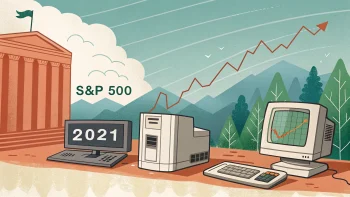Central banks play a vital role in maintaining economic stability through the control of monetary policy. The Federal Reserve, as one of the most influential financial institutions globally, is responsible for making crucial decisions regarding interest rates. This article will explore the potential interest rate determination tomorrow.
“Act Like a Dove, but Talk Like a Hawk”
The phrase “Act like a dove, but talk like a hawk” is commonly used in the financial realm to describe central banks’ approach. A “dovish” stance signifies a willingness to maintain or reduce interest rates to stimulate economic growth, while a “hawkish” stance indicates readiness to increase interest rates to combat inflation. The words and actions of Jerome Powell, Chairman of the Federal Reserve, hold significant sway over the future of the US economy and, consequently, the stock market.
View this post on Instagram
A post shared by Taylor Sohns- CFP®, CIMA®, MBA- Finance (@lifegoalinvestments)
Table of Contents
ToggleThe Interest Rate Decision and Market Expectations
Understanding the relationship between interest rates and the stock market is essential. Lower interest rates generally encourage borrowing and boost economic growth, thereby positively impacting the stock market. Conversely, higher interest rates can lead to more expensive borrowing and potentially slow economic growth, negatively affecting the stock market.
Market analysts were nearly sure the Federal Reserve would refrain from raising interest rates. Data indicated a 99% probability of maintaining current interest rates. However, during the meeting, Jerome Powell’s language hinted at possible changes shortly.
The Hawkish Undertones
Despite the dovish decision to keep interest rates unchanged, experts analyzed Jerome Powell’s language for hints of a hawkish undertone, suggesting potential rate hikes on the horizon. Central banks continuously analyze economic data to make informed decisions, and Powell’s allusions to future interest rate hikes may have been aimed at curbing inflation and maintaining investor confidence.
Expected Interest Rate Cuts by the End of 2024
Market analysts have speculated that by the end of 2024, the Federal Reserve may need to implement three interest rate cuts to support the US economy. This prediction contradicts the hawkish undertones observed in Jerome Powell’s language during the June 2021 meeting. However, these cuts may be deemed necessary due to the recent acceleration in inflation rates.
The Importance of an Evolving Monetary Policy
The Federal Reserve’s monetary policy must adapt continuously in response to economic changes. By considering current economic indicators such as inflation, unemployment rates, and GDP growth, central banks must adjust their stance to achieve their objectives. With inflation rising and market expectations of interest rate cuts by 2024, striking a balance between growth and inflation control becomes paramount.
The Meeting Highlights and a Glimpse into the Future
Like any other, the June 2021 Federal Reserve meeting shaped the future course of monetary policy for the US economy. Despite maintaining a dovish stance by holding interest rates steady, Jerome Powell hinted at the potential for future interest rate hikes. Nevertheless, market analysts predict a series of cuts by 2024 to address increasing inflation. Central banks, including the Federal Reserve, must navigate a delicate balancing act to ensure economic stability.
Conclusion
Navigating the complex stock market world can be challenging, especially with the influence of central banks and fluctuating interest rates. Understanding fundamental concepts, such as the Federal Reserve’s dual responsibility of stimulating economic growth while controlling inflation, is crucial for investors to interpret market trends. As the Federal Reserve continues to act like a dove and talk like a hawk, investors must stay well-informed and adapt their strategies to capitalize on potential opportunities in financial markets.
Frequently Asked Questions (FAQs)
1. What is the role of central banks in the economy?
Central banks, including the Federal Reserve, play a crucial role in maintaining economic stability by controlling monetary policy. They influence the money supply, interest rates, and inflation to achieve specific economic objectives.
2. What is the Federal Reserve, and why is it important?
The Federal Reserve is the United States’s central bank and one of the most influential financial institutions globally. It is responsible for making critical decisions about interest rates and monetary policy that impact the US economy and, consequently, the global financial system.
3. What does “Act like a dove, but talk like a hawk” mean financially?
This phrase describes the approach taken by central banks. “Dovish” signifies a willingness to maintain or lower interest rates to stimulate economic growth, while “hawkish” indicates readiness to raise interest rates to combat inflation.
4. How do interest rates affect the stock market?
Lower interest rates typically encourage borrowing and economic growth, boosting the stock market. Conversely, higher interest rates make borrowing more expensive and may lead to slower economic growth, negatively affecting the stock market.
5. What happened during the June 2021 Federal Reserve meeting?
In June 2021, market analysts expected the Federal Reserve to maintain current interest rates, with a 99% certainty. However, during the meeting, Jerome Powell’s language hinted at potential future changes, leading to discussions about possible rate hikes.
6. Why were there discussions about “hawkish undertones” during the June 2021 meeting?
Despite the decision to maintain interest rates, experts analyzed Jerome Powell’s language and interpreted it as having a hawkish undertone, suggesting possible future rate hikes. This interpretation may have been linked to controlling inflation and maintaining investor confidence.
7. Why are market analysts predicting interest rate cuts by the end of 2024?
Analysts speculate that the Federal Reserve may need to cut interest rates three times by the end of 2024 to support the US economy, despite the hawkish undertones observed in Jerome Powell’s language. This prediction is based on concerns about accelerating inflation rates.
8. How does the Federal Reserve adapt its monetary policy to changing economic conditions?
The Federal Reserve continuously analyzes economic indicators such as inflation, unemployment rates, and GDP growth to adapt its monetary policy. It aims to achieve its economic objectives, balancing economic growth and inflation control.
9. What should investors take away from the article’s insights into the Federal Reserve’s actions?
Investors should understand the Federal Reserve’s dual responsibility: stimulating economic growth while controlling inflation. Staying informed about central bank actions and adapting investment strategies to changing economic conditions is crucial for navigating the stock market effectively.
10. How can investors prepare for potential changes in monetary policy and interest rates?
Investors should closely monitor economic indicators, central bank statements, and expert analyses to prepare for potential changes. Diversifying investment portfolios and maintaining flexibility in strategies can help capitalize on opportunities and manage risks in the financial markets.

















